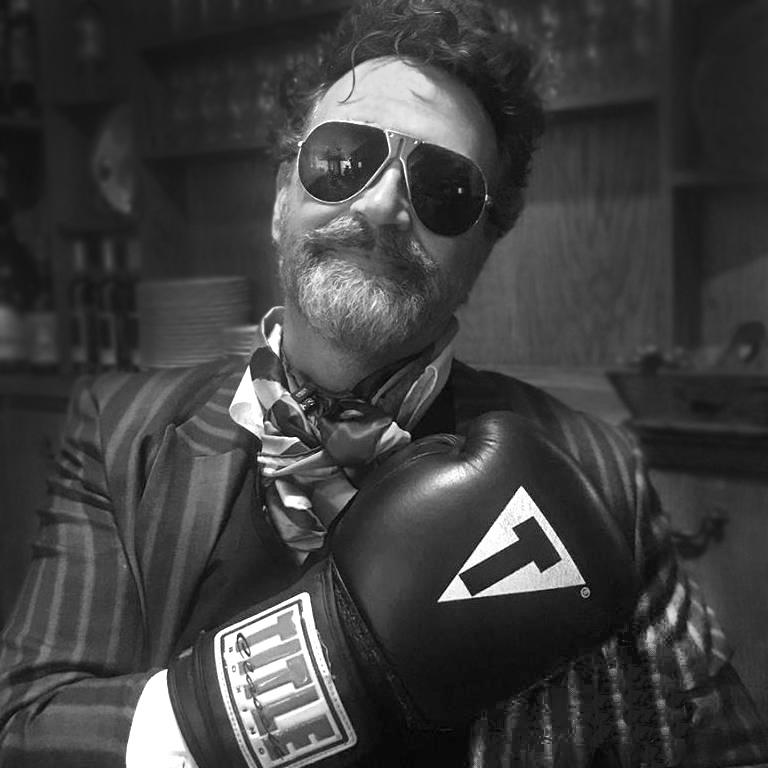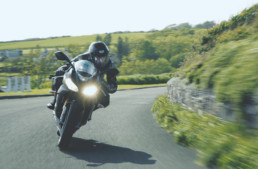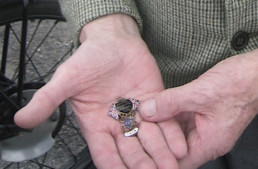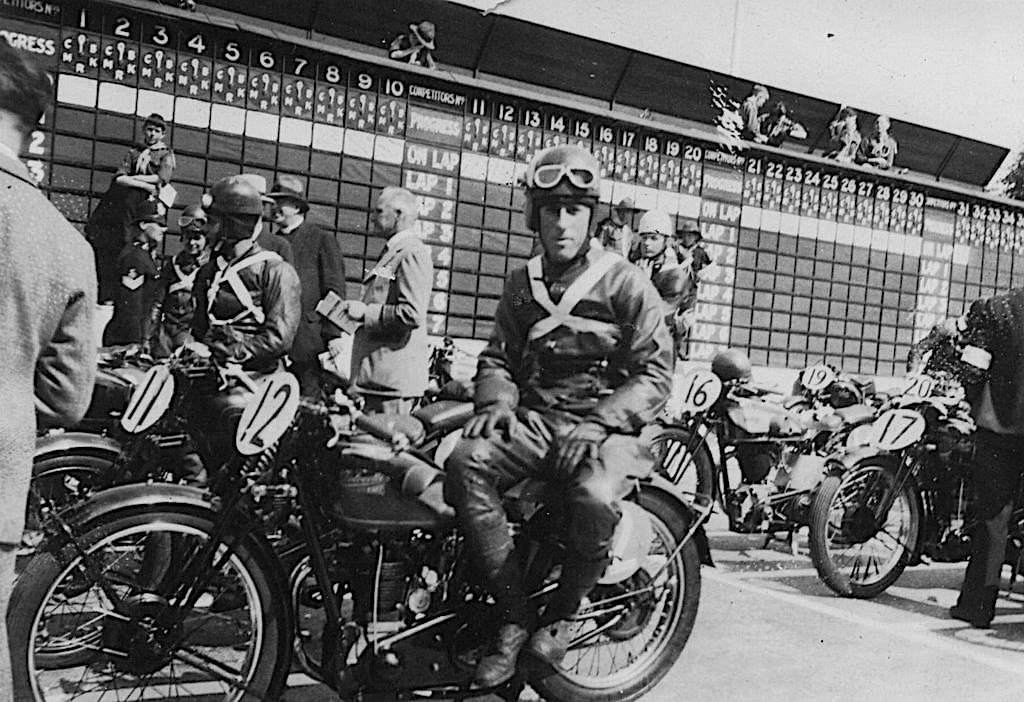
Racing riders are wearing baggy leather separates, as one-piece racing suits weren’t common until the early 50’s; they wear double-breasted button-up short jackets with high-waisted jodhpurs and suspenders underneath. Some of the riders wore shirts and ties, but Sartorialism was on the wane for motorcyclists by the mid-30’s. Brooklands riders kept their neckties until the war, with ‘Barry’ Baragwanath keeping his detachable collar and bowtie until the end of his career – how charmingly old fashioned.
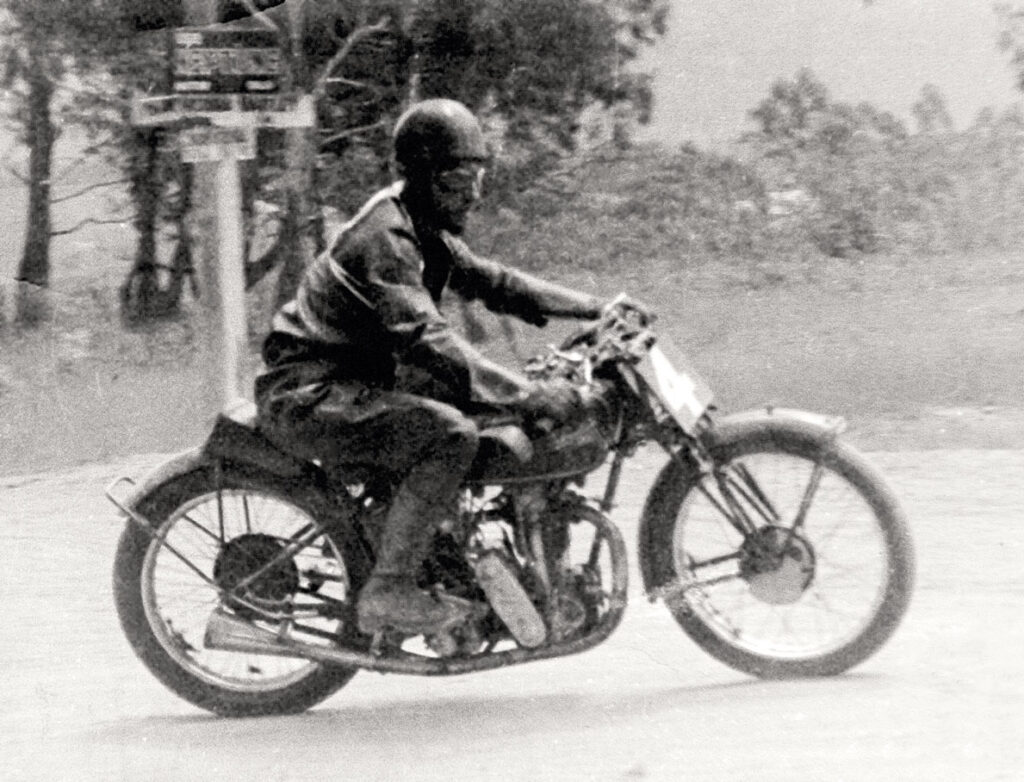
The Velocette MkIV KTT was a production racer produced from 1933-35, and was the first substantial revamp of the KTT line, introduced in 1928. Many riders did well on the MkIV, winning Grands Prix and TTs around the world, and many Gold Stars at Brooklands for turning 100mph+ laps during a race, which is significant for a 350cc machine [see our article on David Vincent’s Gold Star ride on a Velo here]. The KTT line evolved in 1935 with the MkV, which used the same full-cradle frame as the new KSS roadster, and the aluminum cylinder head of the KSS as well: it was not as successful as the MkIV, being heavier and a little slower. The MkVI that followed was a strictly limited production for selected riders, and the subject of much speculation – read our story here. The KTT MkVII was a brilliant machine with a wholly new all-alloy engine, and a revised frame geometry based on feedback from Stanley Woods. The MkVIII KTT was the ultimate of the KTT line, built from 1938-50, using the world’s first swingarm rear suspension with separate shock units, as we see on most motorcycles to this day. The MkVIII was the swansong of the KTT line, and the most successful of all.
